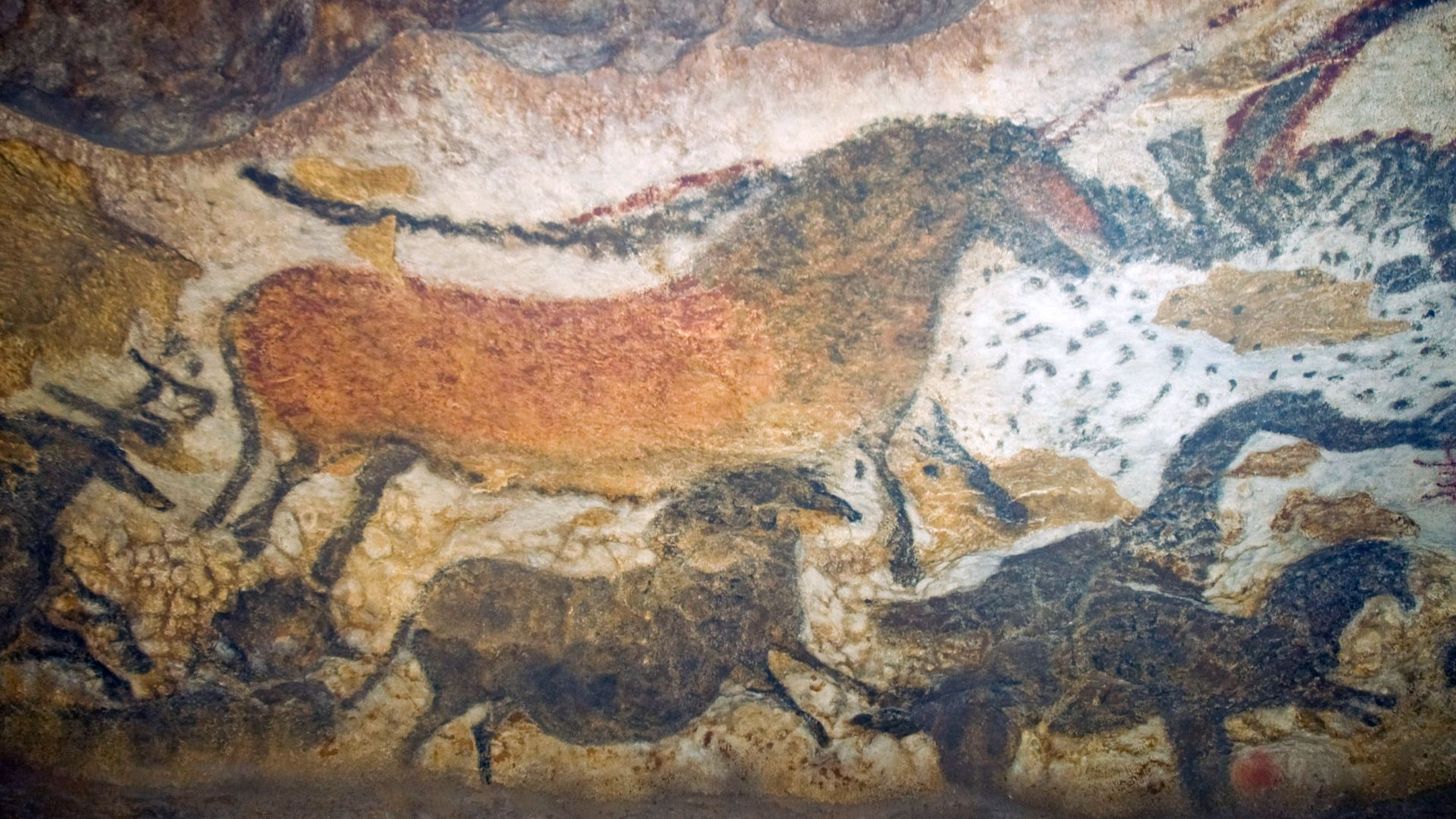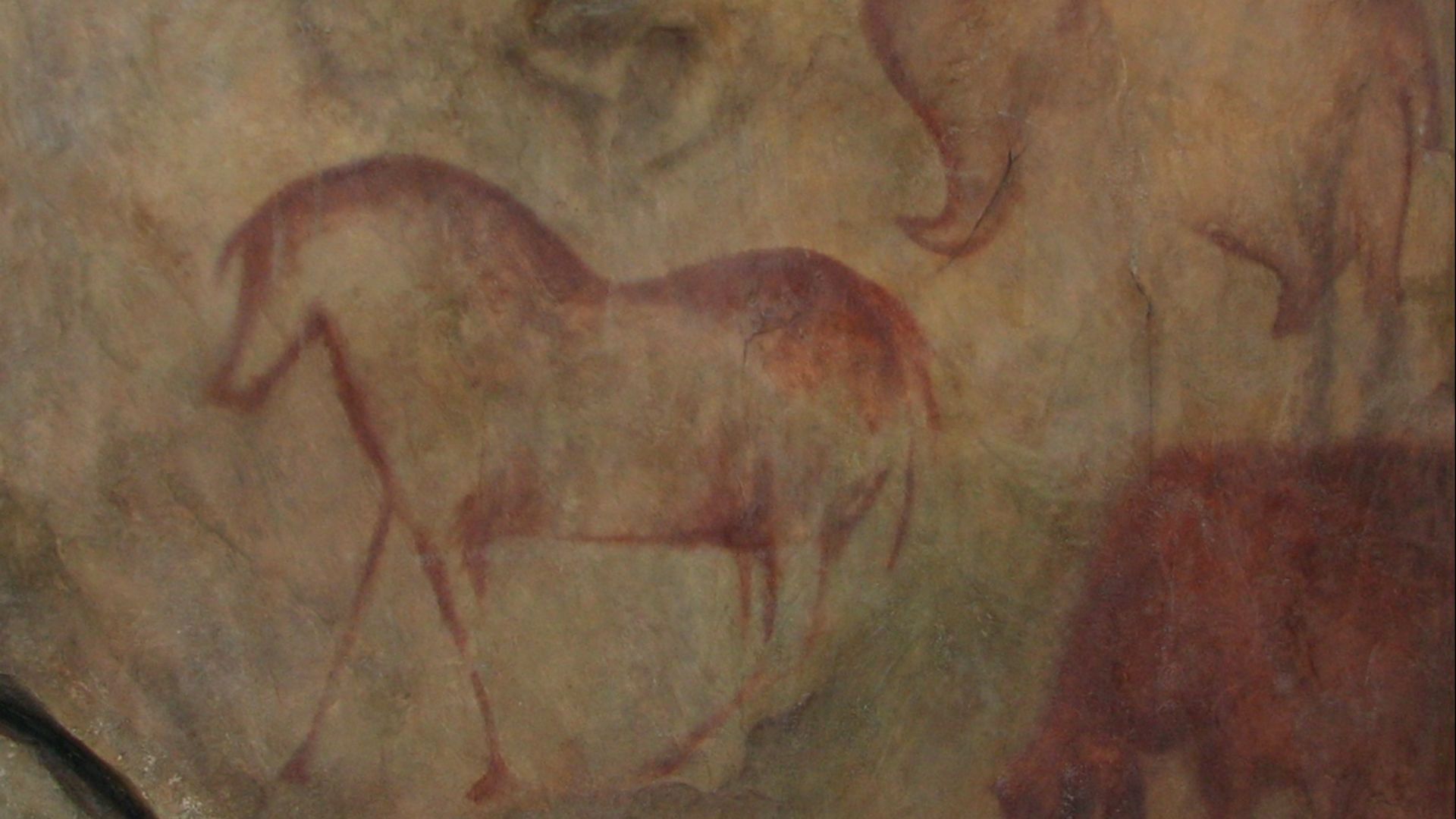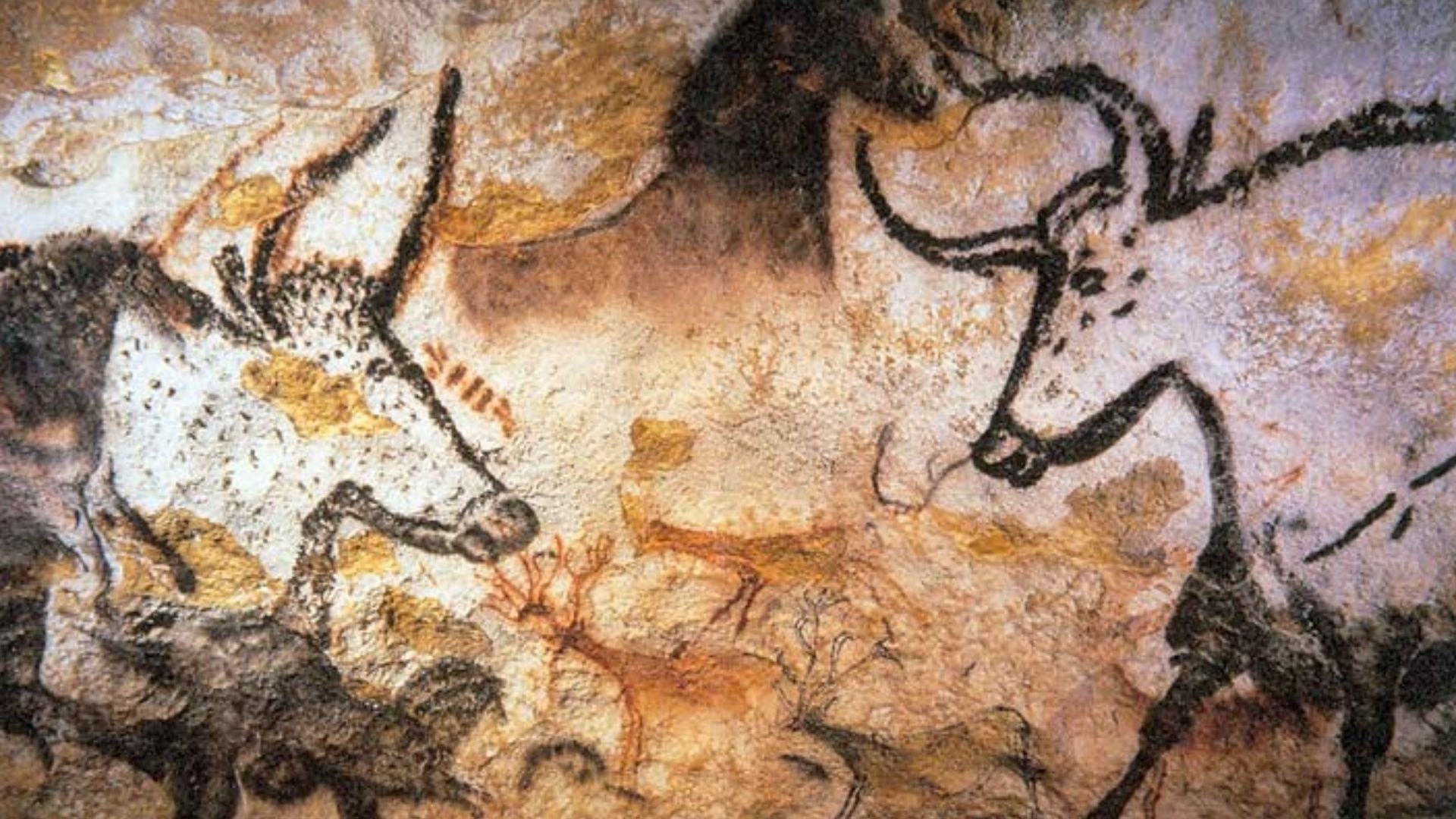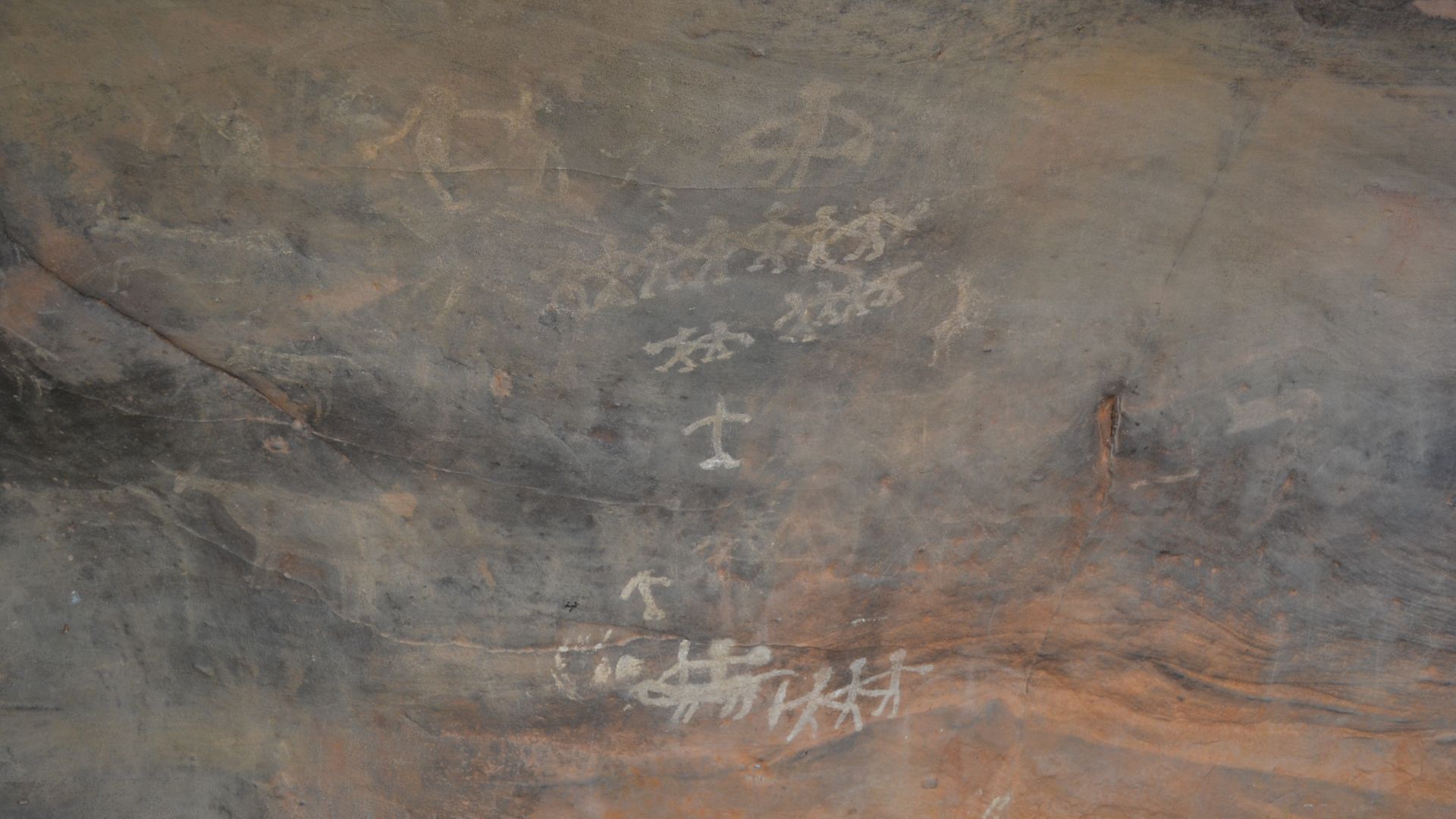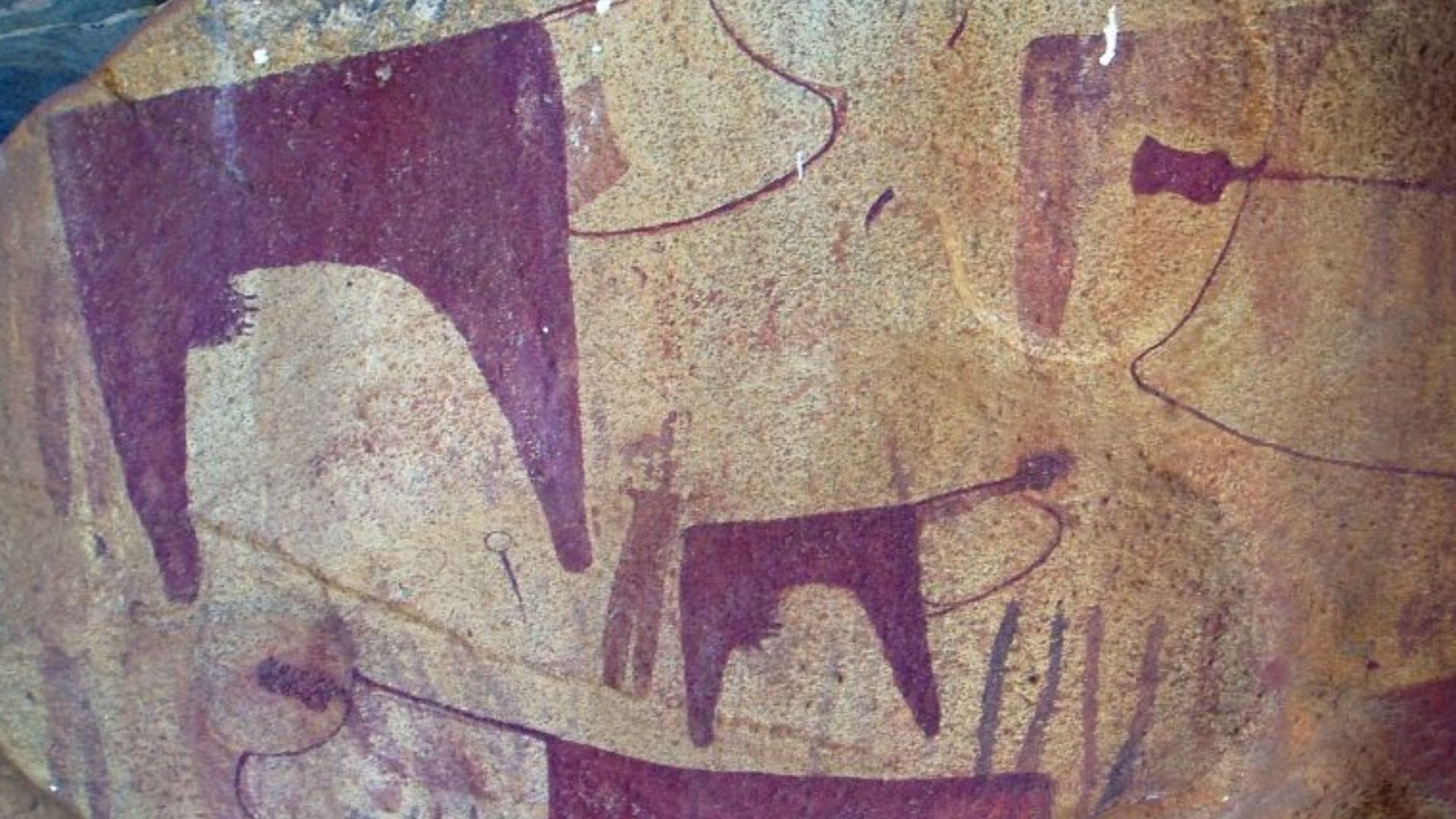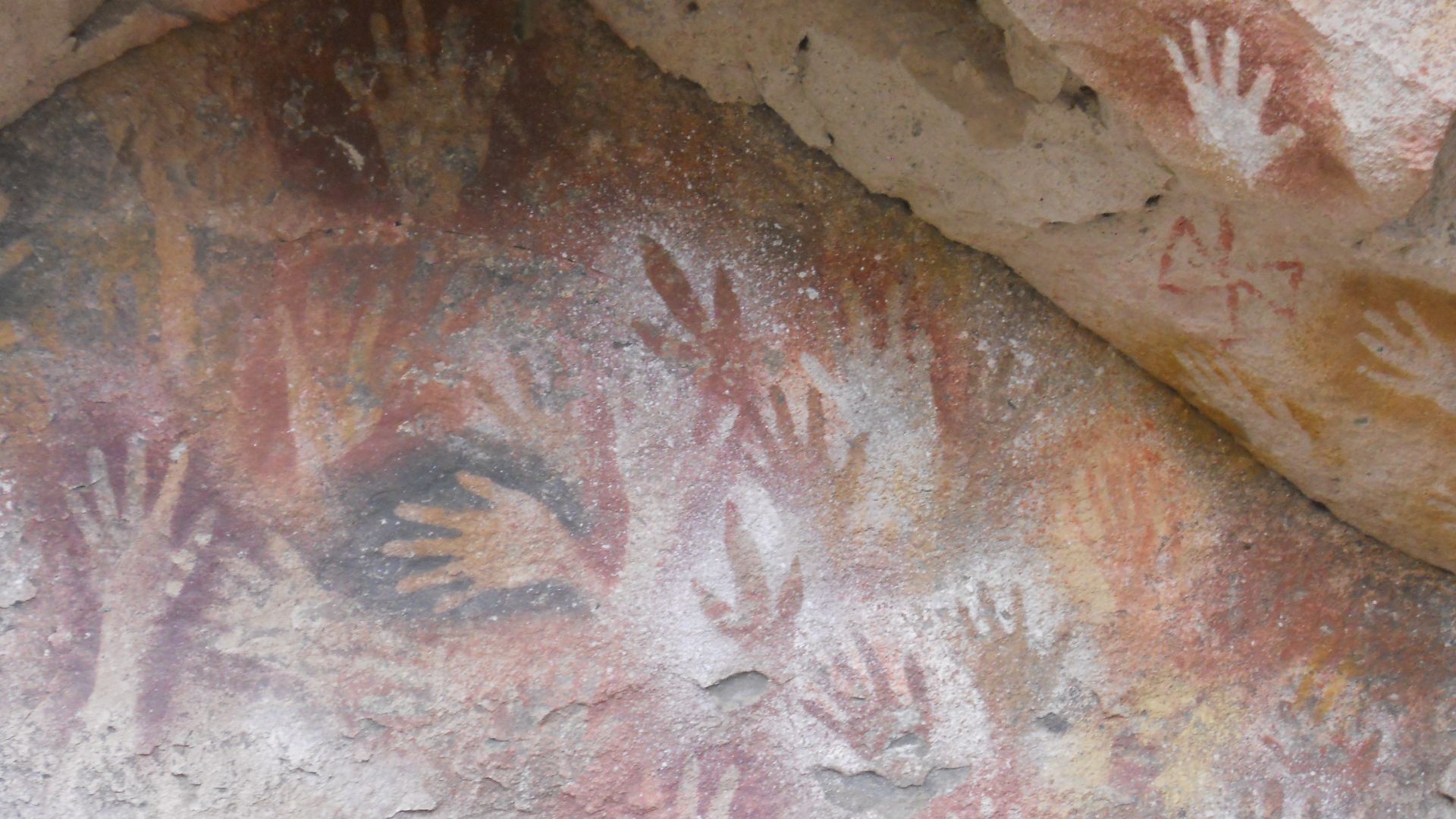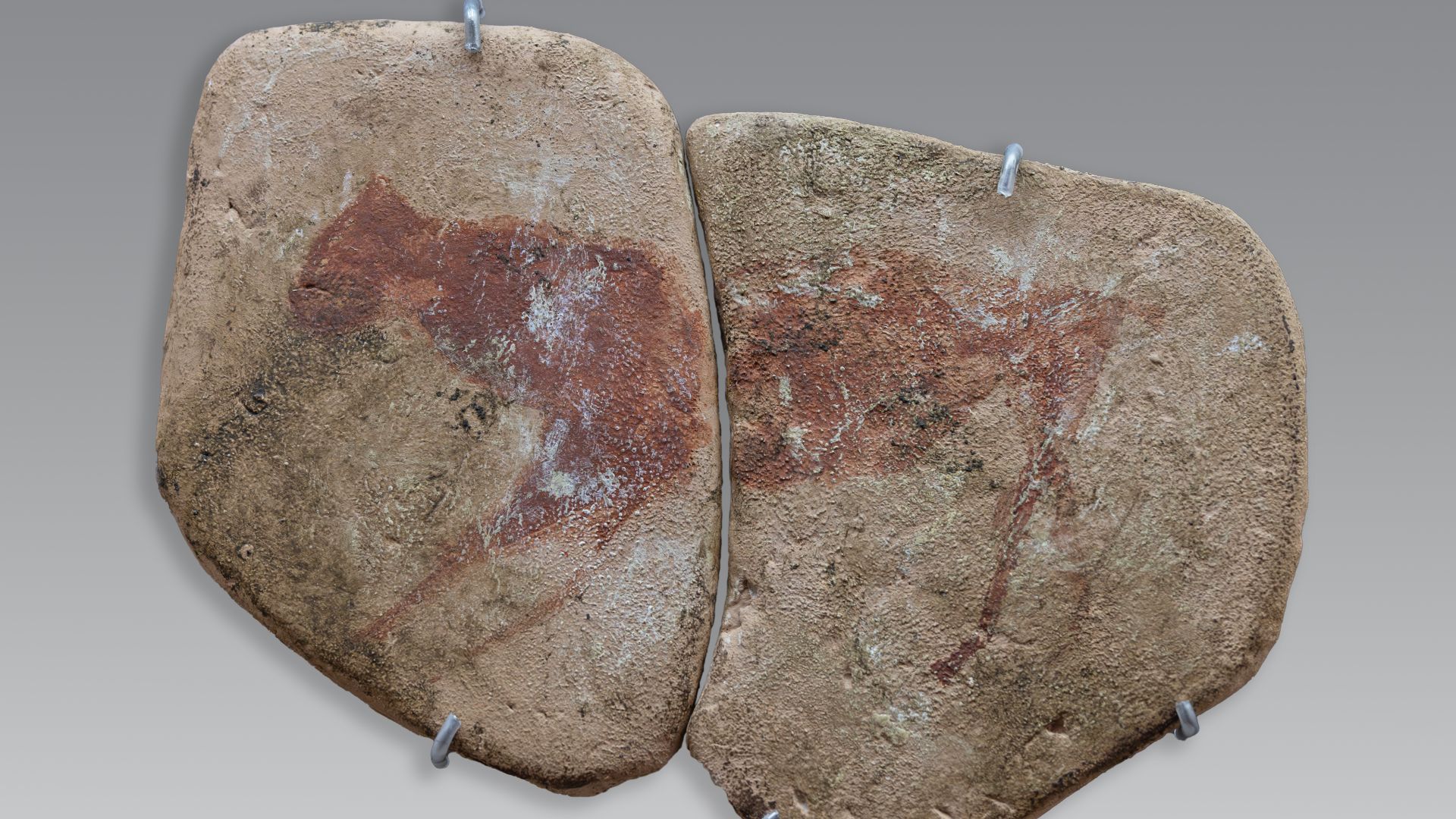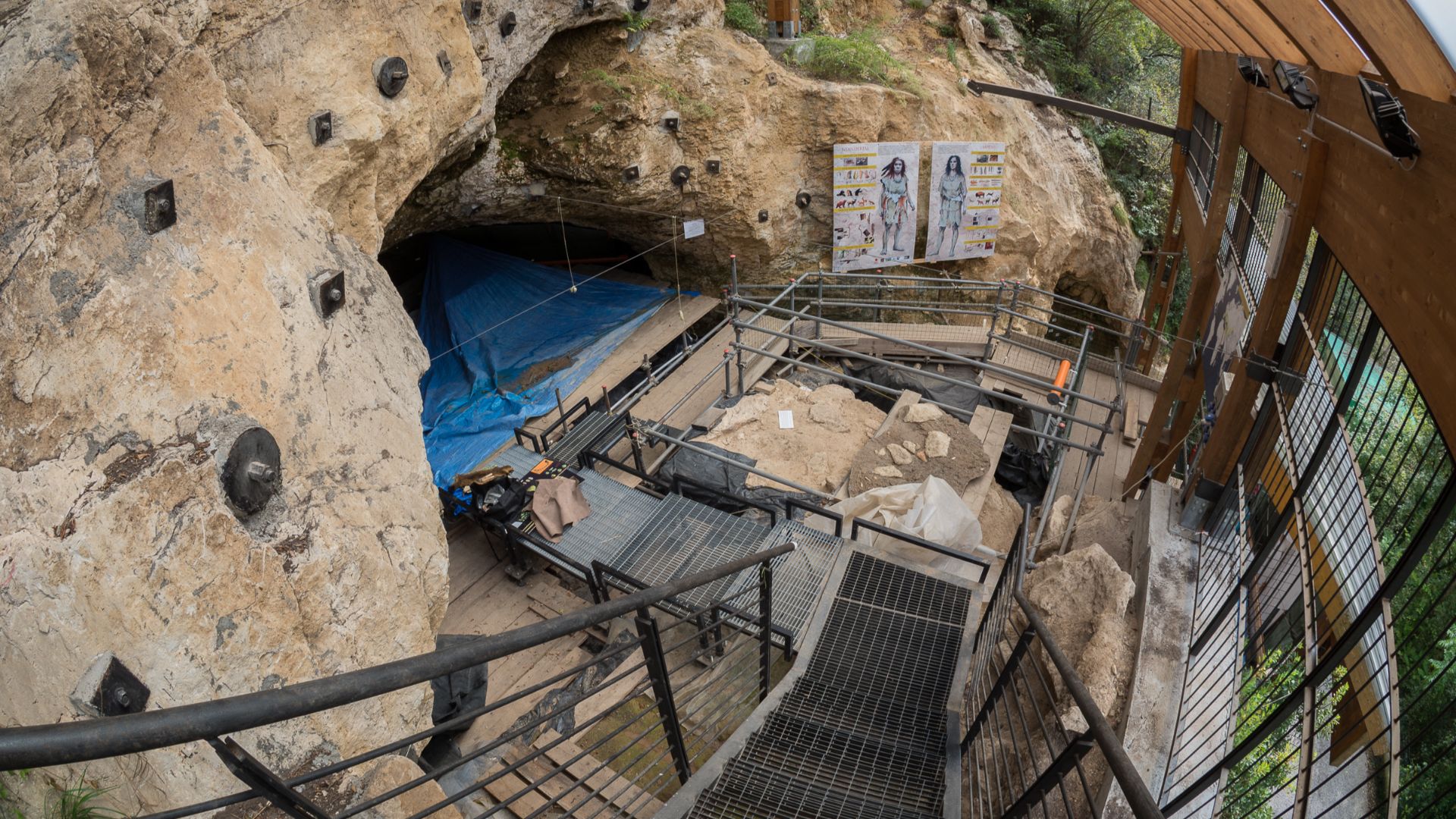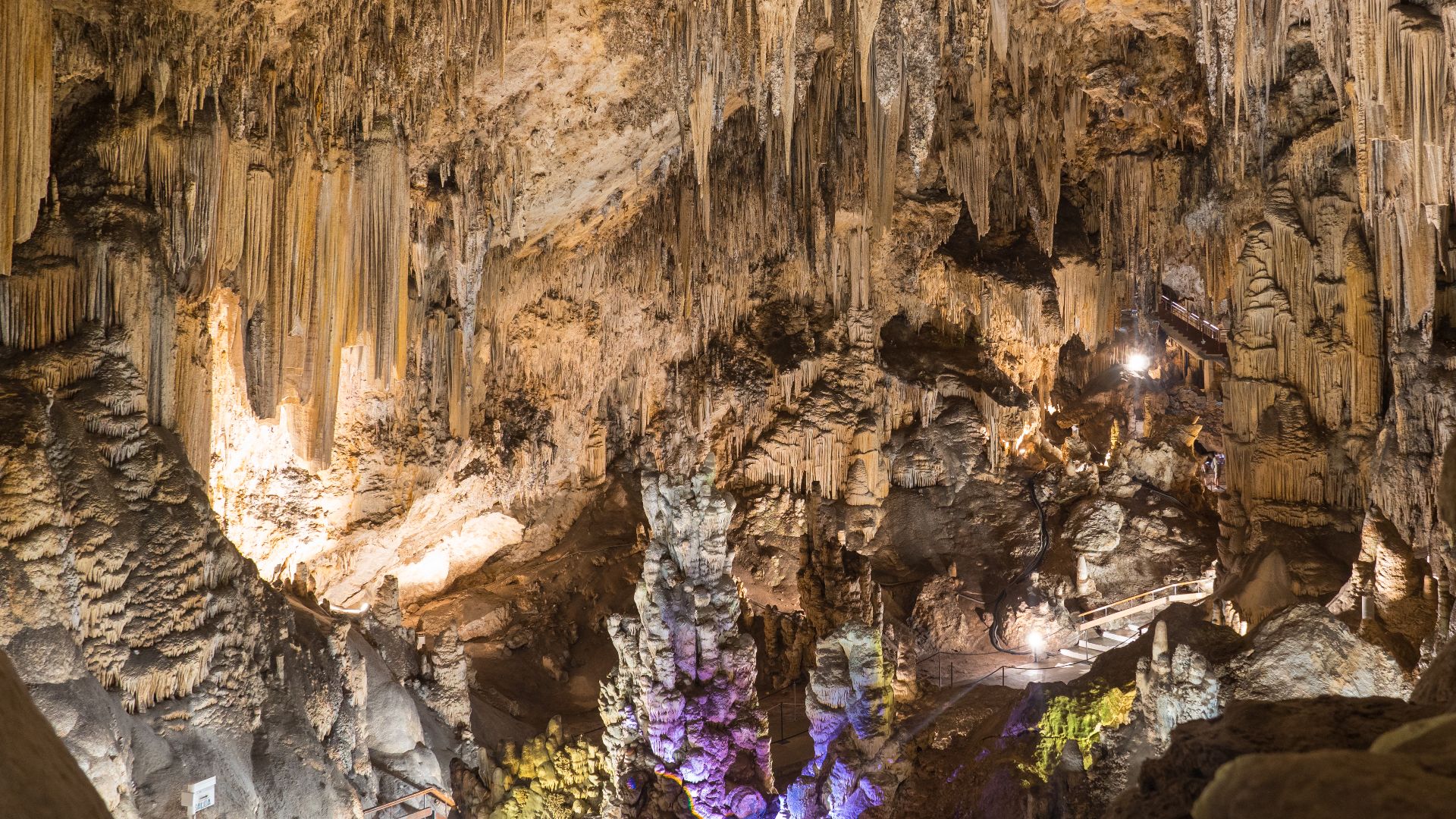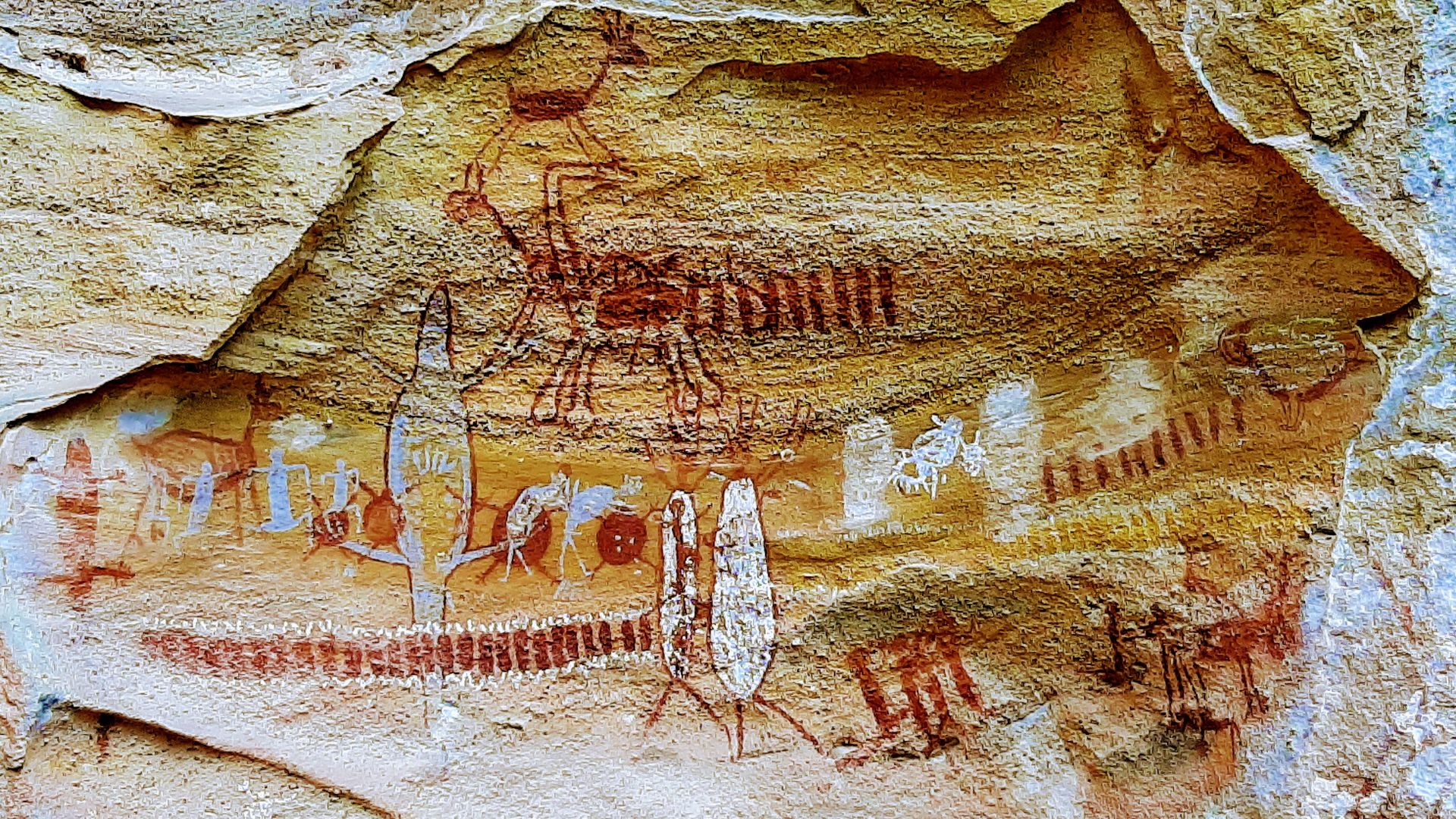A Time Capsule Of Human Artistry
Long before humans figured out farming or writing, they were already making art. Not the kind you'd hang in a frame, but the kind you’d find stretched across cave ceilings. People used natural pigments and basic tools to leave behind images of animals, people, symbols, and sometimes just their own handprints. These works offer a rare peek into how ancient humans observed the world. So, let’s take a look at 20 of the oldest paintings ever discovered.
1. Kapova Cave Bison
Kapova Cave reveals a gallery of Ice Age life painted over 14,000 years ago. Red ochre bison dominate the scene, often shown in profile with curved horns and defined humps. Nearby symbols and geometric shapes add layers of mystery, suggesting the bison were part of a deeper shamanic narrative.
2. El Castillo’s Red D iscs
Stretching across a 60-foot wall in Spain’s El Castillo cave, red discs and hand stencils create a dense field of ancient marks. One disc dates back more than 40,800 years, which raises the possibility of Neanderthal authorship. Plus, their arrangement has sparked numerous theories, all under debate.
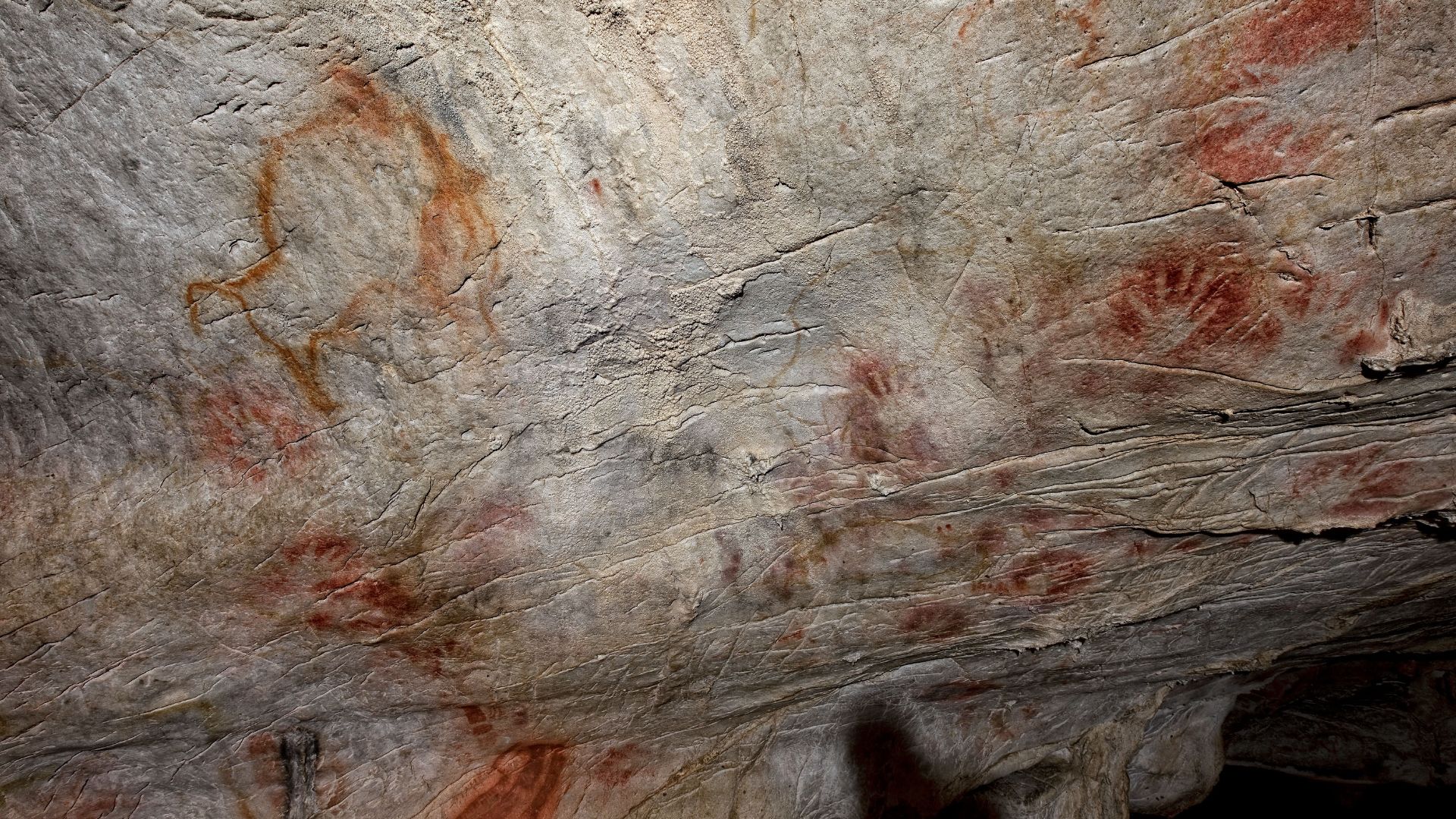 Gabinete de Prensa del Gobierno de Cantabria on Wikimedia
Gabinete de Prensa del Gobierno de Cantabria on Wikimedia
3. Sulawesi Pig
The Sulawesi Pig stands as the earliest known figurative animal artwork. Found in Indonesia’s Maros-Pangkep region, the pig appears to engage in a ritual or confrontation. Its survival owes everything to the cave’s constant humidity and isolation, which have kept this limestone canvas untouched by time.
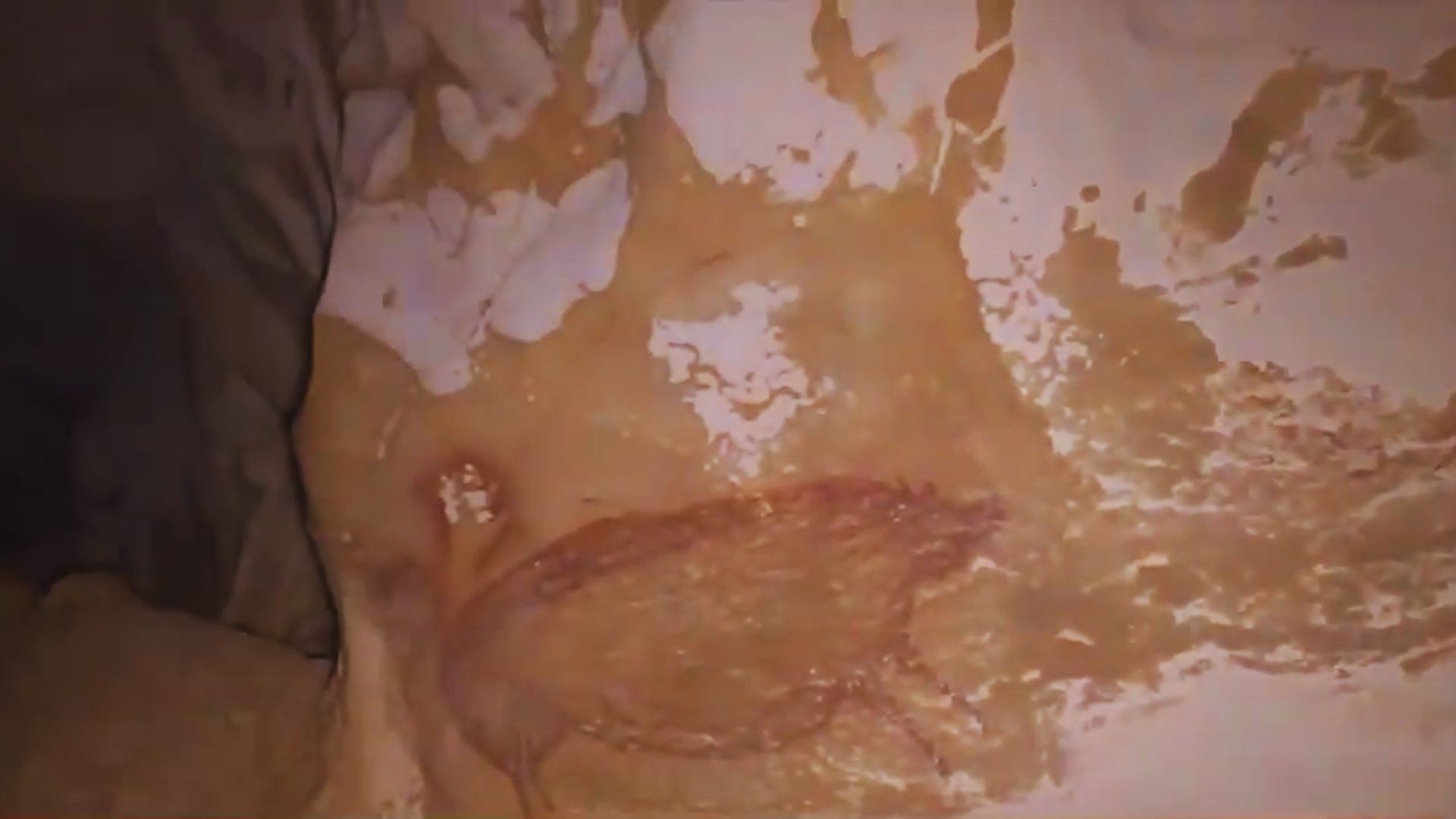 World's oldest rock paintings discovered in Indonesia by Asia & World News
World's oldest rock paintings discovered in Indonesia by Asia & World News
4. Lascaux’s Great Hall Of The Bulls
Discovered by accident in 1940, Lascaux’s vast chamber stuns with its scale. Towering above visitors, a 17-foot-long bull dominates the scene—one of the largest animals in prehistoric art. Interestingly, artists used scaffolding to access high ceilings, carefully following the rock’s contours to shape lifelike forms.
5. Bhimbetka Dancing Figures
The Bhimbetka caves (India’s Vindhya hills) reveal a swirling circle of dancers frozen in stone. These humanoid figures suggest a communal ritual or tribal performance. Moreover, the surrounding scenes fill the rock in layers, revealing generations of artistic evolution.
6. Altamira Bison Herd
High on a cave ceiling in Spain, Ice Age artists turned the rock into a theater. Using the natural bulges in the stone, they painted bison that practically leap into view. Once doubted, their Ice Age origin is now confirmed, which secures Altamira’s legacy as a prehistoric masterclass in realism.
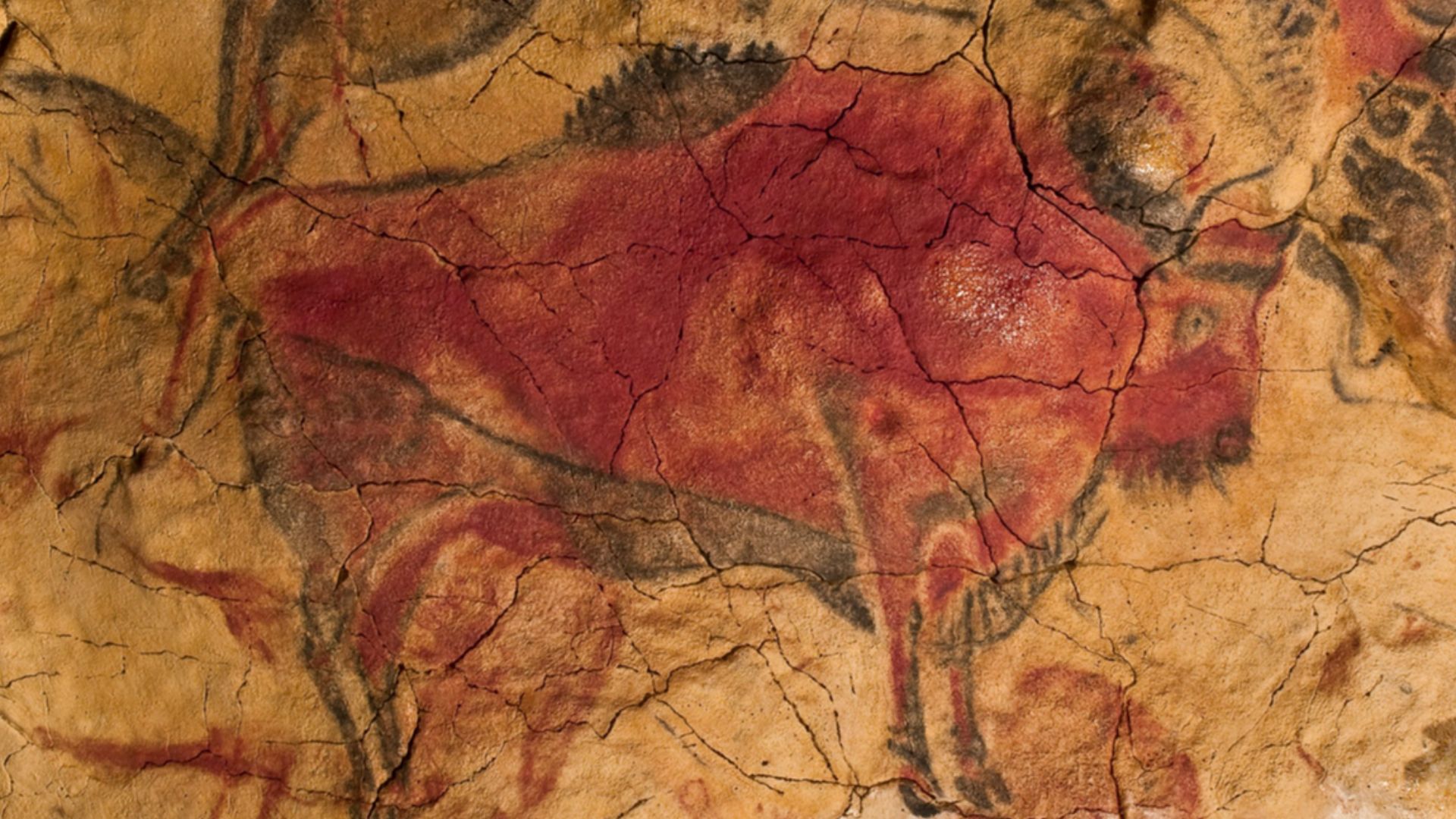 Museo de Altamira y D. Rodríguez on Wikimedia
Museo de Altamira y D. Rodríguez on Wikimedia
7. Tassili n’Ajjer Martians
High on Algeria’s sandstone cliffs, a gallery of strange, round-headed figures stares back through time. With antenna-like features and floating poses, these humanoids earned the nickname “Martians.” Many researchers interpret these figures as visions born of trance or shamanic ritual.
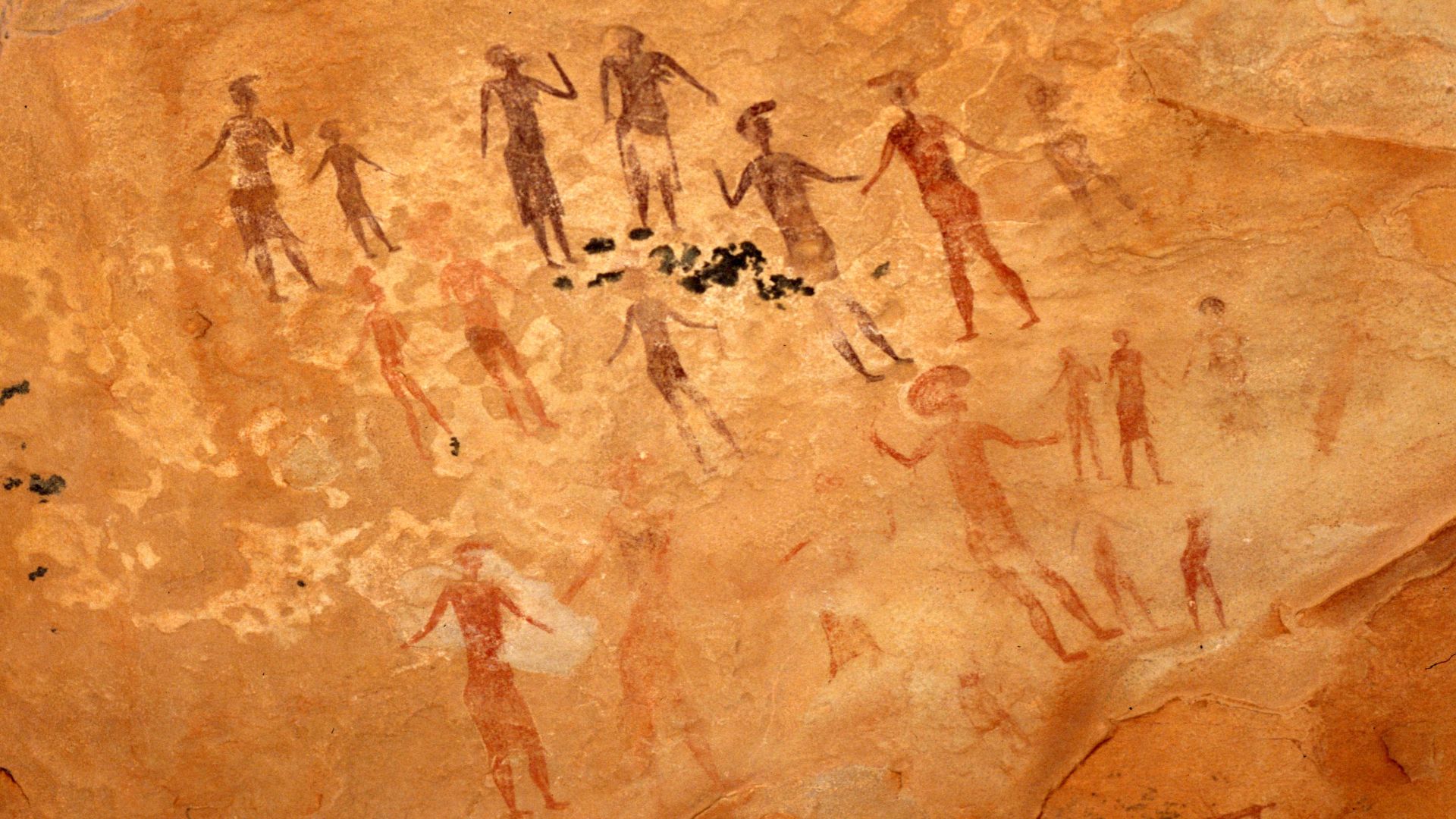 Patrick Gruban from Munich, Germany on Wikimedia
Patrick Gruban from Munich, Germany on Wikimedia
8. Magura Cave’s Solar Calendar
Magura Cave hosts a prehistoric calendar etched in dots and circles. Aligned like a grid, the symbols suggest an early attempt to track time. Today, these vivid markings cling to the rock, preserving one of the world’s earliest timekeeping systems.
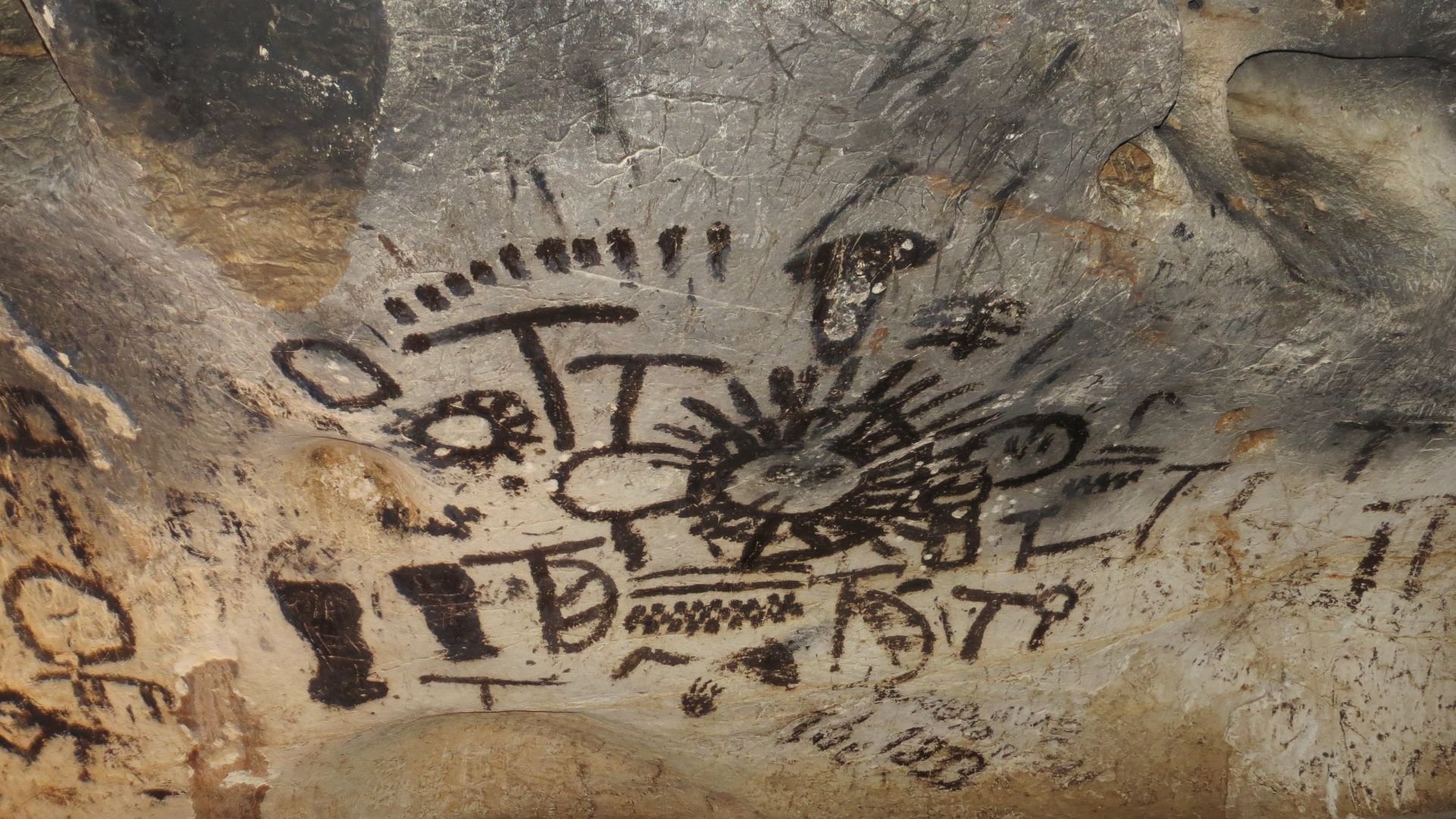 The original uploader was Octopus at Slovenian Wikipedia. on Wikimedia
The original uploader was Octopus at Slovenian Wikipedia. on Wikimedia
9. Laas Geel Cattle Paintings
In Somaliland’s arid northeast, Laas Geel reveals one of Africa’s most vibrant prehistoric treasures. Despite centuries of exposure, the pigments—reds, whites, yellows—still blaze with intensity. Moreover, these images suggest a sacred bond between people, animals, and the divine.
10. Cueva De Las Manos
Cueva de las Manos is famed for a haunting display of over 800 stenciled hands. Among these prints are vivid scenes: guanacos fleeing hunters with bolas, winding paths, and abstract shapes. Some handprints have missing fingers, possibly due to ritual amputation or symbolic gestures.
11. Apollo 11 Cave Stones
Discovered in a Namibian rock shelter in 1969, the same year as the moon landing, the Apollo 11 Cave Stones consist of seven quartzite slabs. Scholars believe they may have been used in rituals or carried between seasonal camps.
12. Tadrart Acacus Giraffes
High on the desert cliffs of Libya, ancient artists carved giraffes with breathtaking precision. Each figure captures lifelike proportions. These vivid images suggest a dramatically different past when the Sahara was green and filled with creatures now long gone.
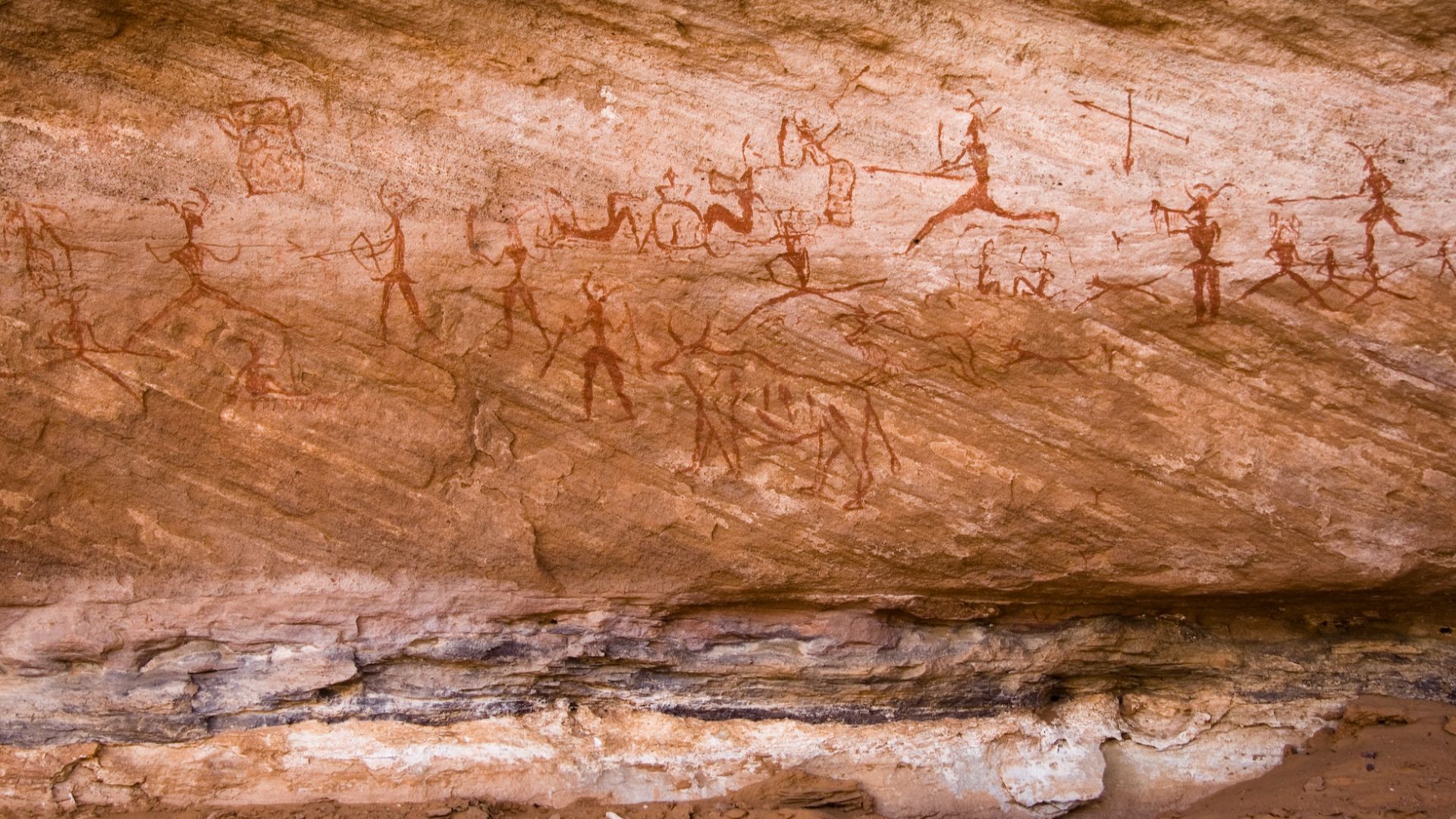 Luca Galuzzi (Lucag) on Wikimedia
Luca Galuzzi (Lucag) on Wikimedia
13. Fumane Cave Red Dot
Inside a cave near Verona, a single red ochre dot holds unexpected weight. Positioned within a grid-like “hashtag” motif, it represents one of Europe’s earliest abstract symbols. This simple mark signals a turning point when symbolic thought began to shape how people recorded meaning and memory on stone.
14. La Pasiega Quadrangular Symbols
Hanging like a coded message on a cave wall in northern Spain, the red quadrangular “ladder” of La Pasiega draws immediate attention. Its clean lines and structured layout suggest more than decoration, possibly a calendar or counting system.
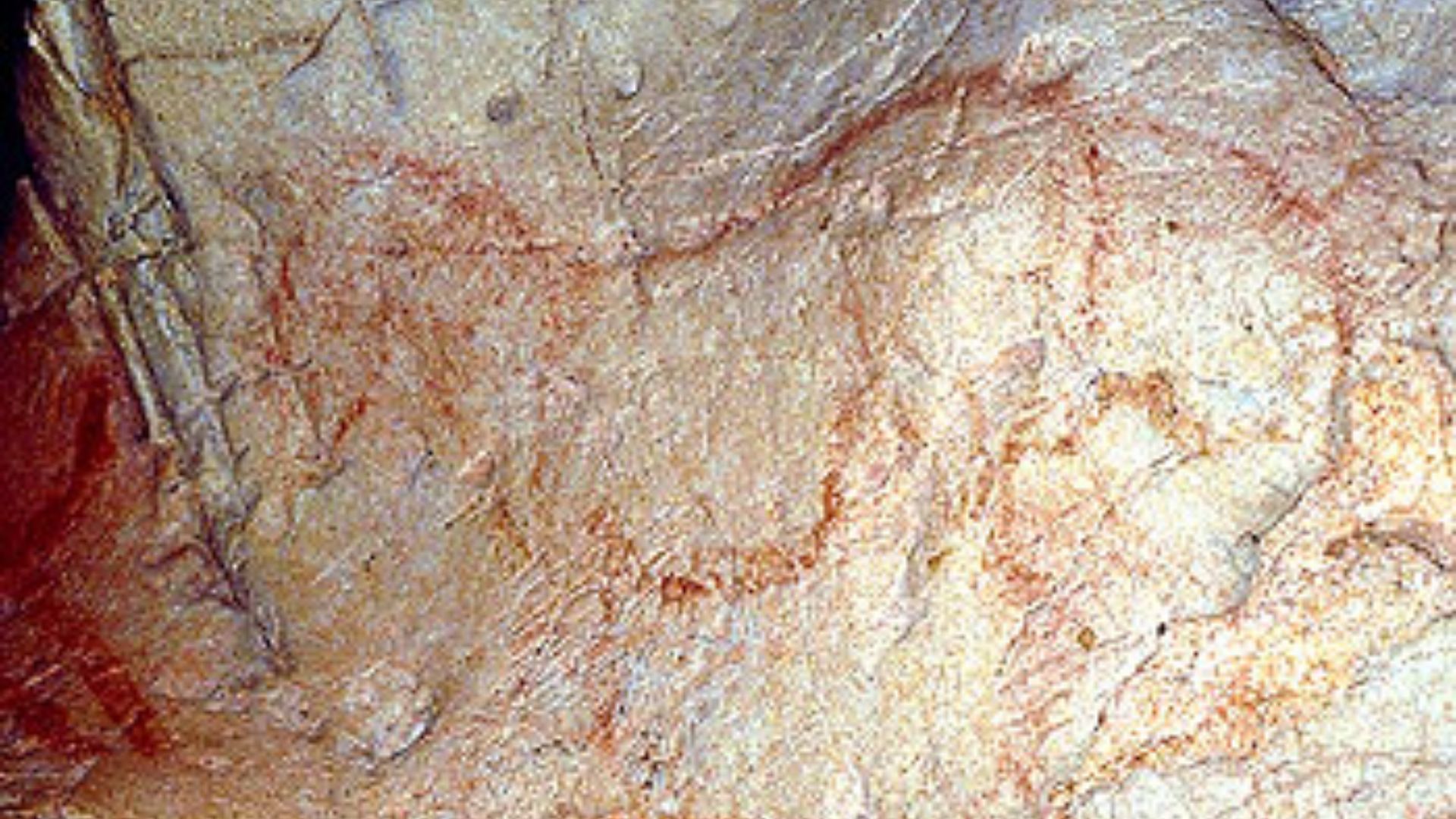 Gobierno de Cantabria on Wikimedia
Gobierno de Cantabria on Wikimedia
15. Pech Merle Spotted Horses
The Pech Merle horses stand out with their striking black spots and lifelike detail. Modern genetics confirm that dappled horses like these once roamed Ice Age Europe. The horses likely held spiritual or cultural meaning, serving as more than mere observation.
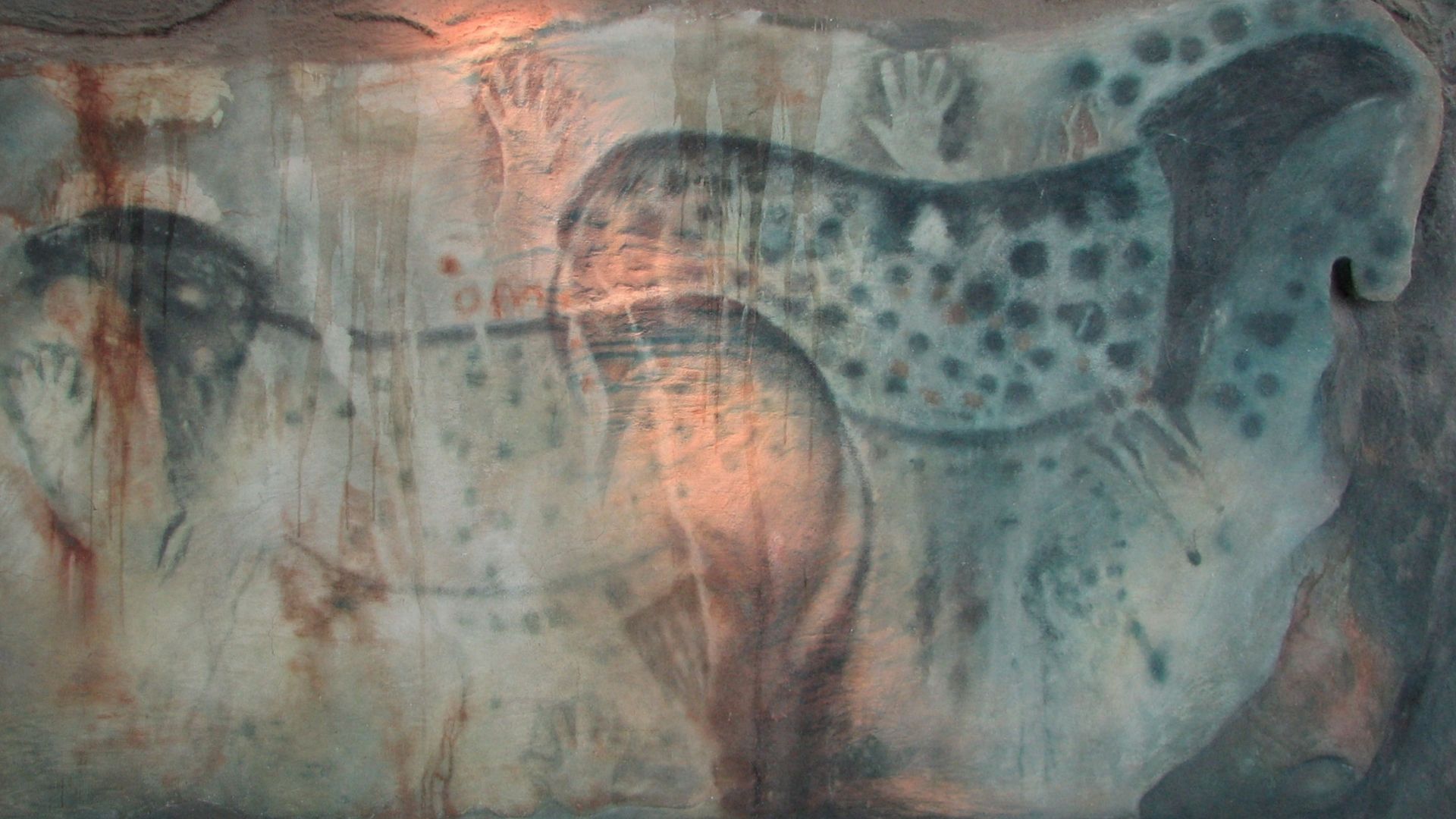 HTO, User:Kersti Nebelsiek on Wikimedia
HTO, User:Kersti Nebelsiek on Wikimedia
16. Nawarla Gabarnmang Charcoal Figures
The charcoal drawings of Nawarla Gabarnmang date back over 28,000 years. Human forms, boomerangs, and netted motifs appear overhead. Remarkably, the Jawoyn people still use the site in spiritual practice, which preserves both the artwork and its living significance across generations.
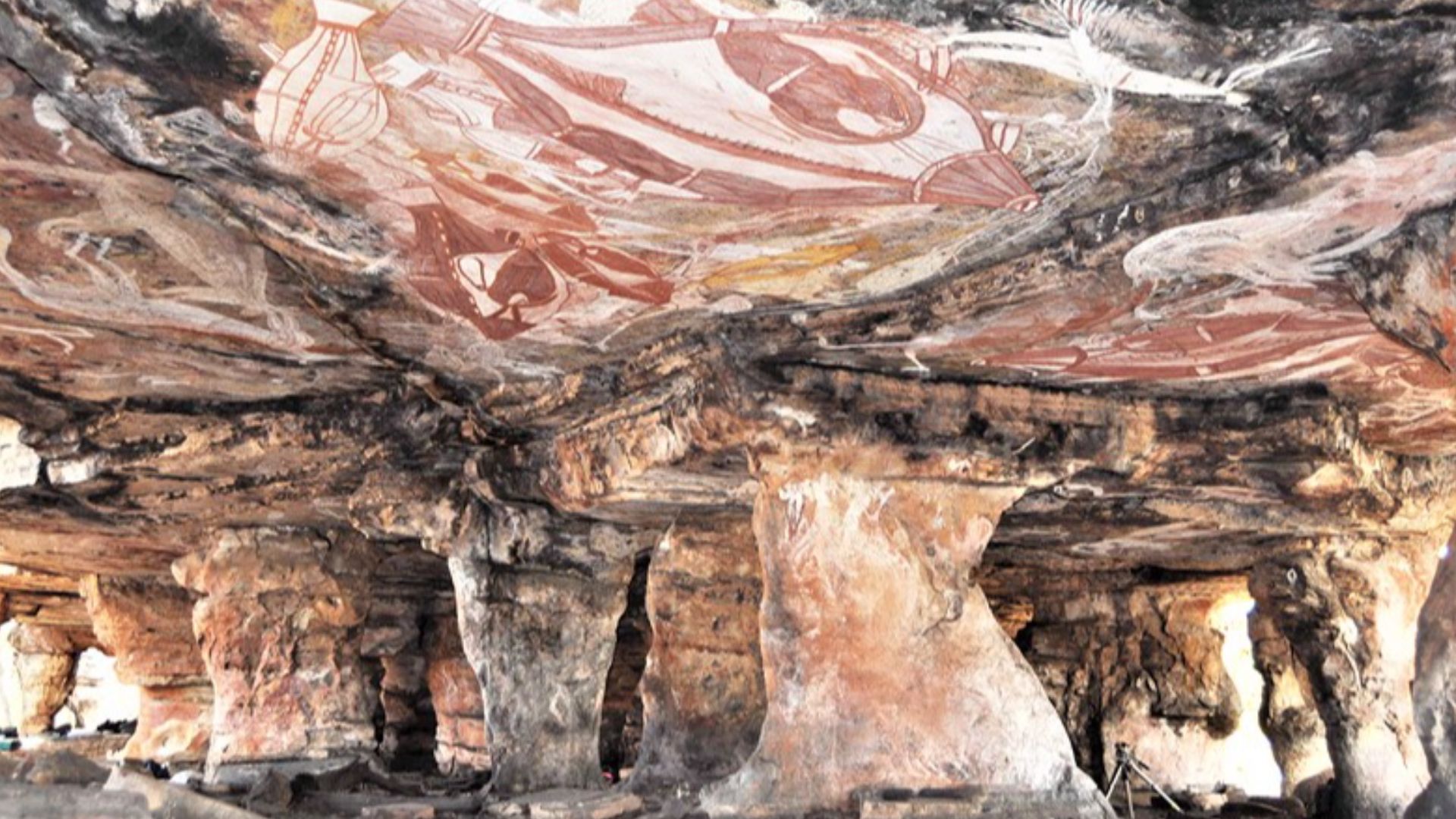 Jean-Jacques Delannoy on Wikimedia
Jean-Jacques Delannoy on Wikimedia
17. Nerja Cave Seals
Nerja Cave contains charcoal seal drawings that may be over 42,000 years old. Their simple yet clear forms suggest a Neanderthal hunt, predating Homo sapiens in the region. Found in deep, narrow chambers, these images were likely created during fire-lit expeditions.
18. Cosquer Cave Horses
Accessible only through a submerged tunnel off France’s Mediterranean coast, Cosquer Cave hides over 150 Ice Age animal figures within its dark chambers. Among them, horses stand out with sharply defined outlines and vivid, alert stances.
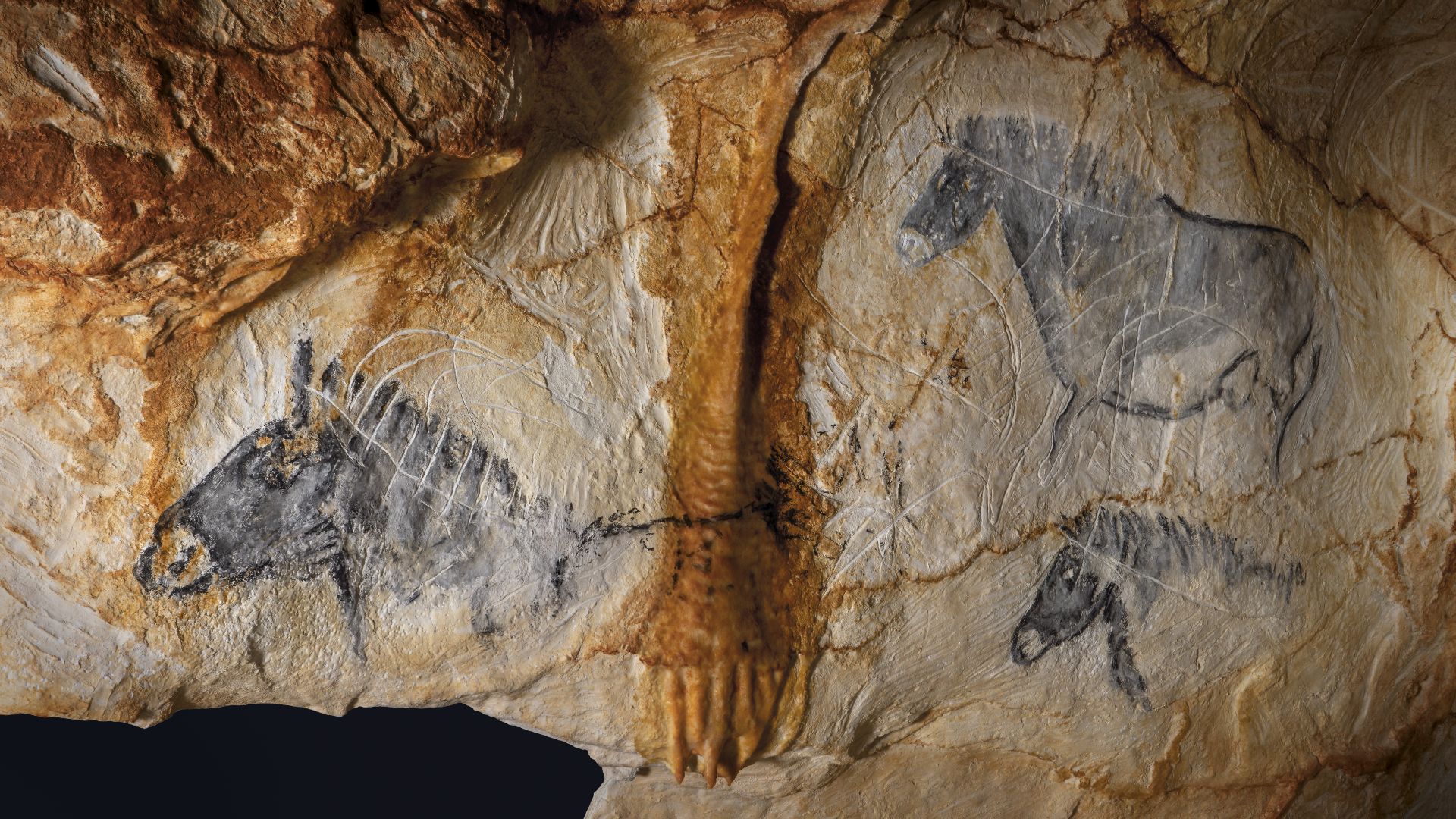 Kleber Rossillon & Région Provence-Alpes-Côte d’Azur / Sources 3D MC on Wikimedia
Kleber Rossillon & Région Provence-Alpes-Côte d’Azur / Sources 3D MC on Wikimedia
19. Chauvet Cave Lions
Sealed behind a rockfall in France’s Ardèche Valley, the Chauvet Cave lions lay hidden for thousands of years—until rediscovery revealed a striking glimpse into Ice Age life. These big cats, shown mid-stride and notably without manes, reflect a clear understanding of their real-life counterparts.
 Unknown authorUnknown author on Wikimedia
Unknown authorUnknown author on Wikimedia
20. Serra Da Capivara Human Scenes
In Brazil’s Piauí state, the rock walls of Serra da Capivara erupt with vivid depictions of early human life. Painted in deep red, figures dance, hunt, wear masks, and even give birth, which forms some of the oldest narrative panels in the Americas—possibly over 25,000 years old.
KEEP ON READING
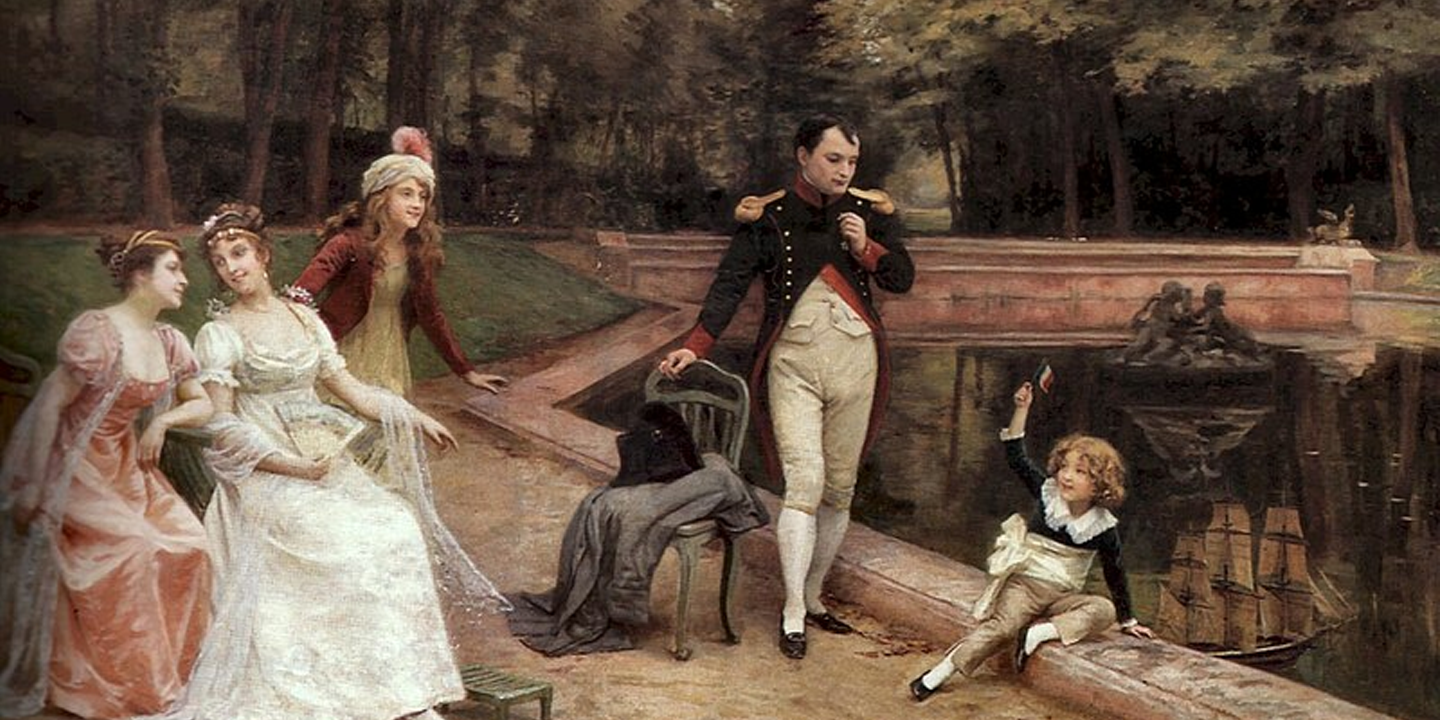
The 20 Most Recognized Historical Figures Of All Time
The Biggest Names In History. Although the Earth has been…
By Cathy Liu Oct 4, 2024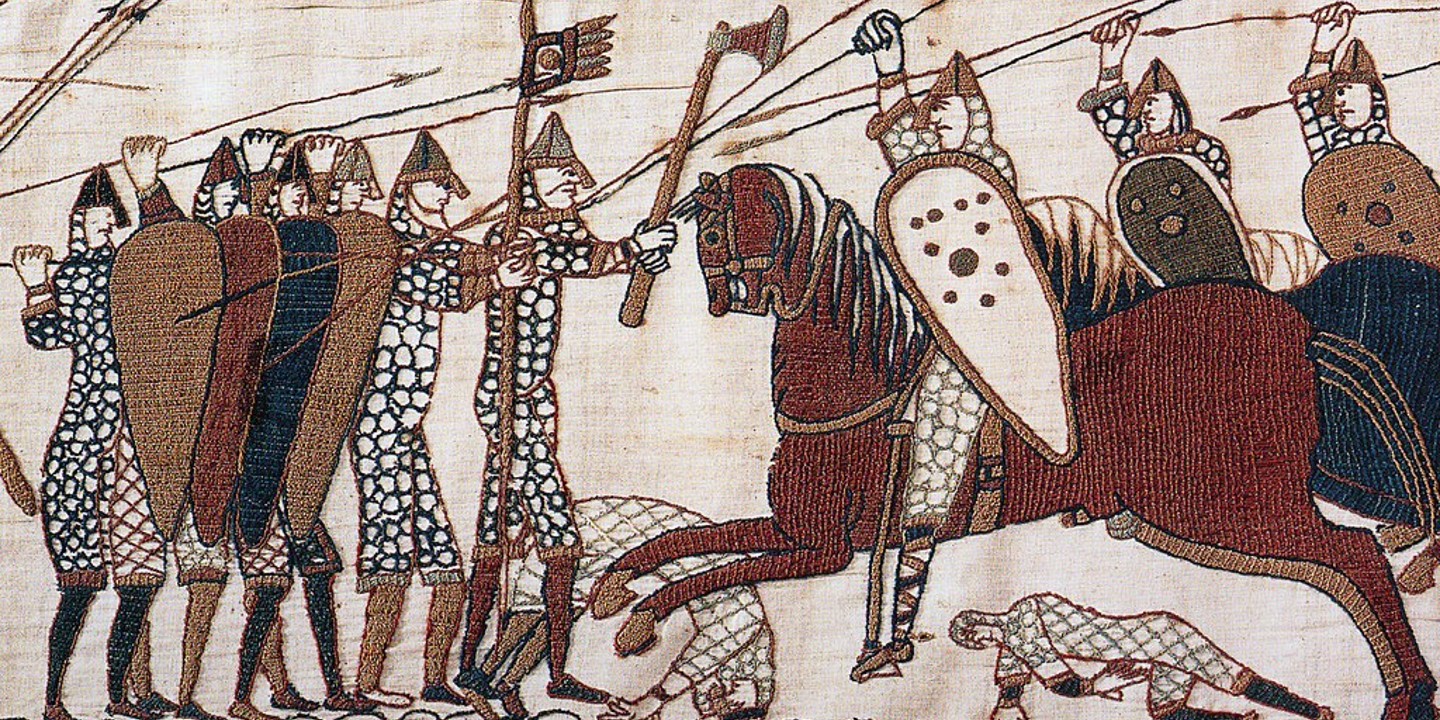
10 of the Shortest Wars in History & 10 of…
Wars: Longest and Shortest. Throughout history, wars have varied dramatically…
By Emilie Richardson-Dupuis Oct 7, 2024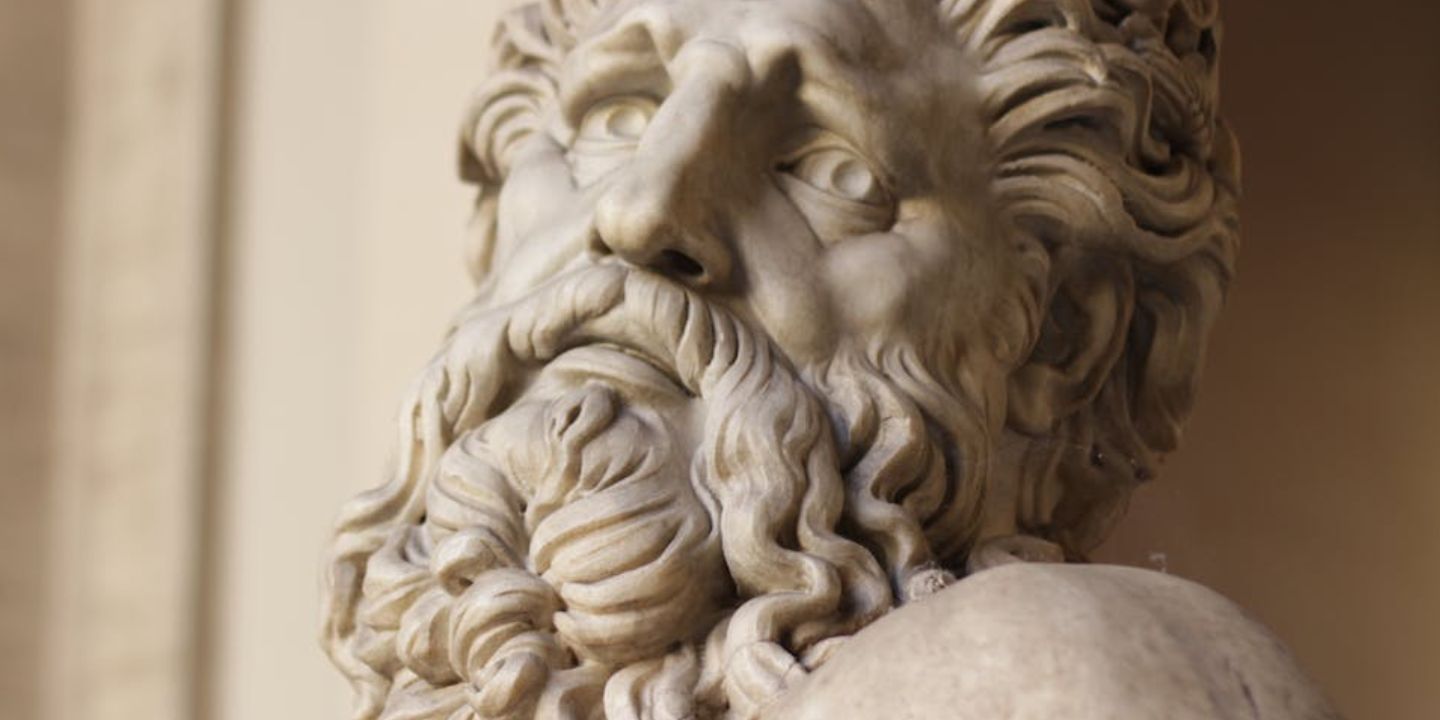
10 Fascinating Facts About Ancient Greece You Can Appreciate &…
Once Upon A Time Lived Some Ancient Weirdos.... Greece is…
By Megan Wickens Oct 7, 2024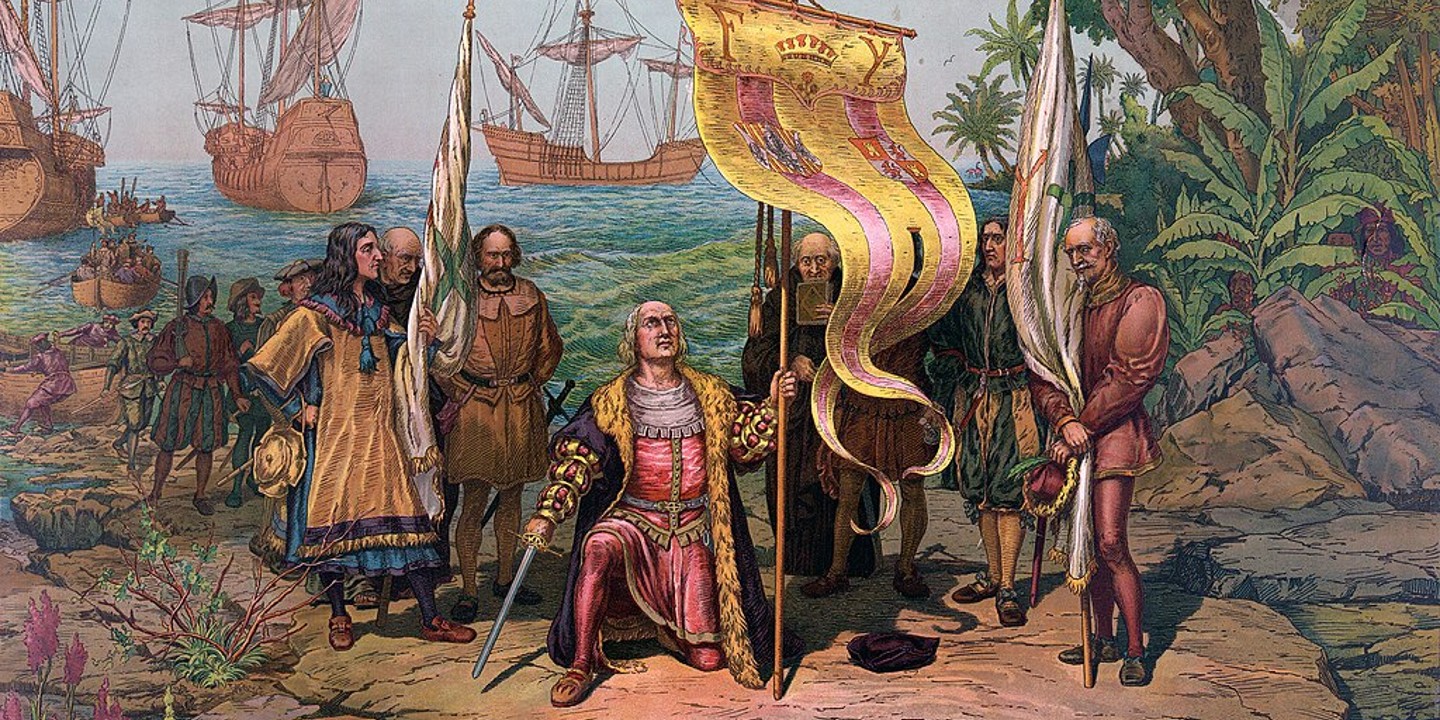
20 Lesser-Known Facts About Christopher Columbus You Don't Learn In…
In 1492, He Sailed The Ocean Blue. Christopher Columbus is…
By Emilie Richardson-Dupuis Oct 9, 2024
20 Historical Landmarks That Have The Craziest Conspiracy Theories
Unsolved Mysteries Of Ancient Places . When there's not enough evidence…
By Megan Wickens Oct 9, 2024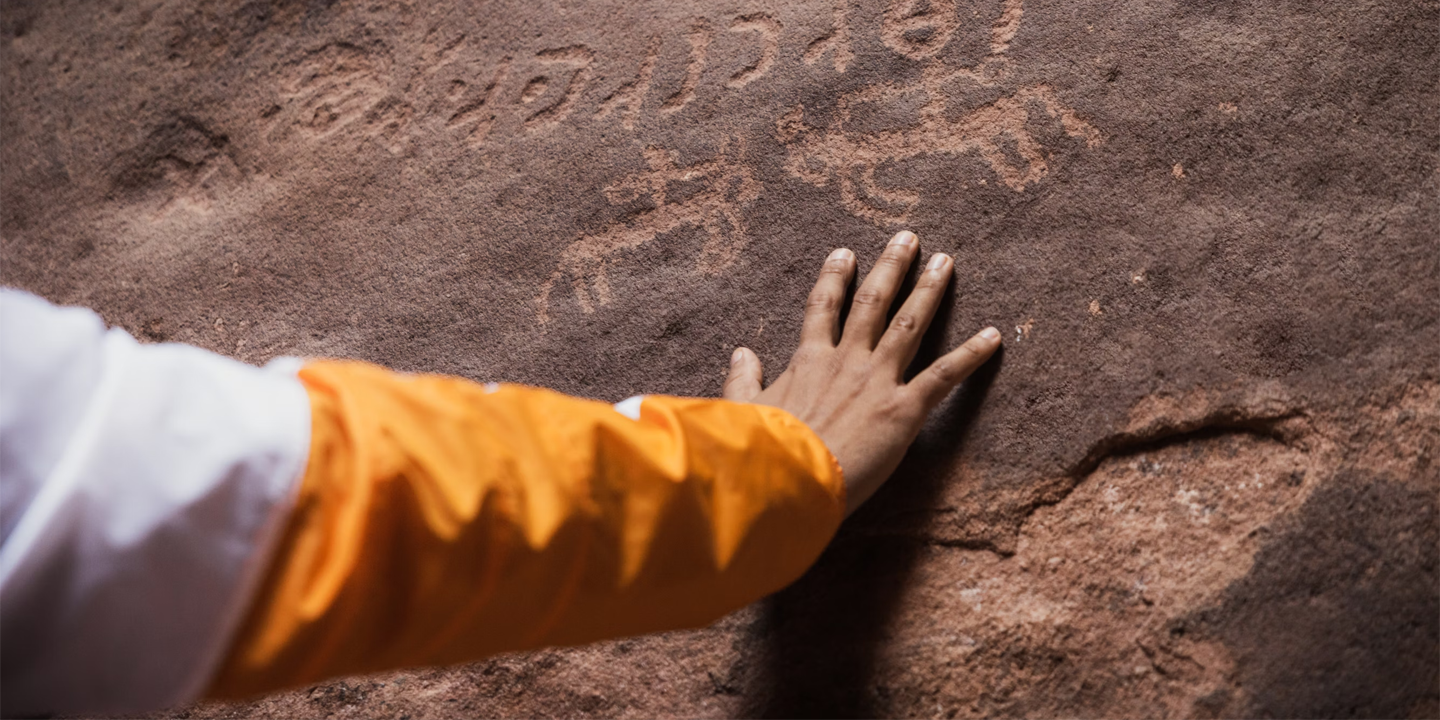
The 20 Craziest Inventions & Discoveries Made During Ancient Times
Crazy Ancient Inventions . While we're busy making big advancements in…
By Cathy Liu Oct 9, 2024

